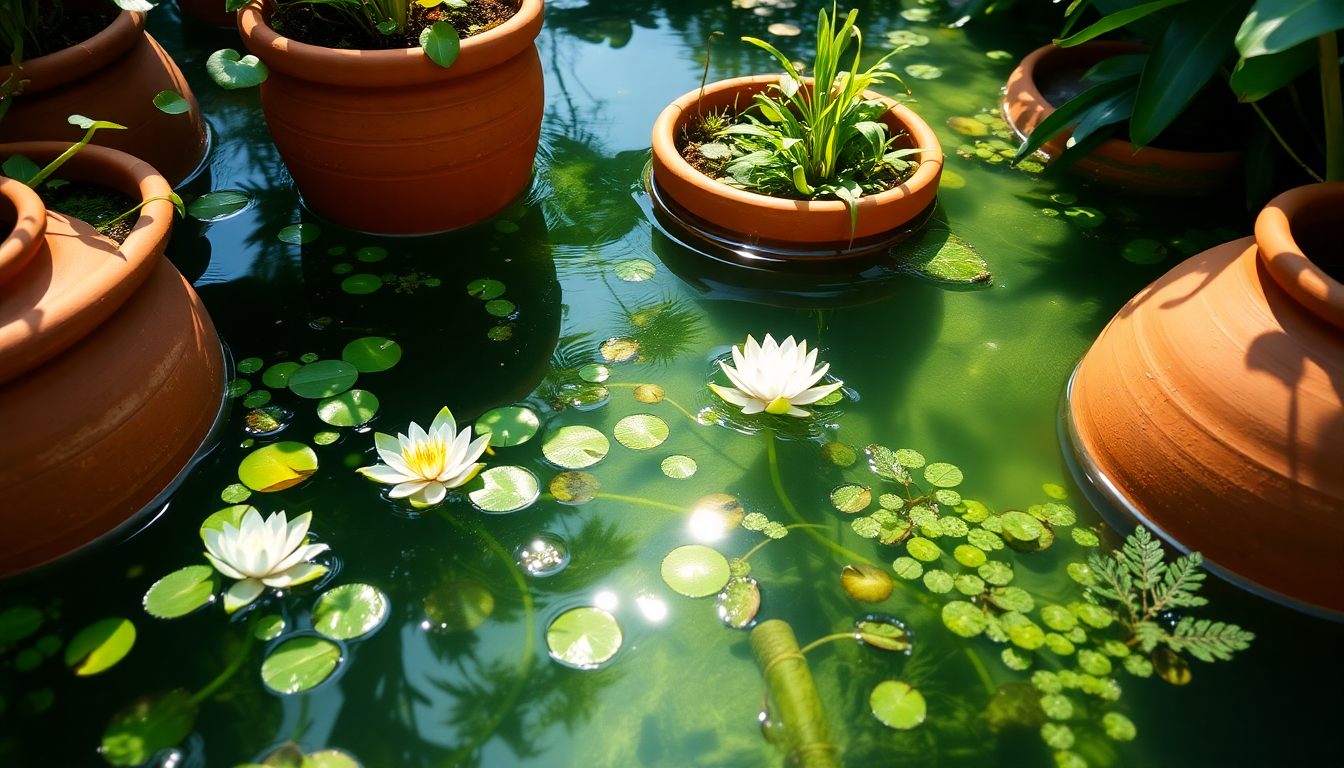As the sun rises over the lush gardens of Sarjapur, the team at Idyl, Bangalore's premier online gardening destination, is gearing up to answer a question that has long puzzled local plant enthusiasts: can you use terracotta pots for aquatic plants?
Idyl, known for its wide selection of high-quality plants, fertilizers, and gardening tools, has become a trusted resource for Sarjapur's growing community of green-thumbed residents. In this comprehensive blog post, we'll dive deep into the world of aquatic plants and explore the suitability of terracotta pots for these unique and captivating species.
The Allure of Aquatic Plants
Aquatic plants, with their mesmerizing underwater displays and ability to thrive in water-based environments, have captured the imagination of gardeners and pond enthusiasts alike. From the vibrant water lilies that float gracefully on the surface to the lush, submerged foliage that provides shelter and oxygenation for aquatic life, these plants offer a captivating and serene addition to any water feature.
Sarjapur, with its abundance of ponds, lakes, and water bodies, has become a hub for aquatic plant enthusiasts. Residents have been eager to incorporate these aquatic wonders into their outdoor spaces, creating tranquil oases that promote biodiversity and enhance the overall aesthetic of their gardens.
Terracotta Pots: A Viable Option?
One of the most common questions that Idyl's gardening experts receive from Sarjapur residents is whether terracotta pots can be used to house aquatic plants. Terracotta, with its porous and breathable nature, has long been a favorite material for traditional gardeners, but its suitability for water-based environments is often debated.
To address this query, Idyl's team has conducted extensive research and experimentation, drawing on their wealth of knowledge and experience in the field of aquatic horticulture.
The Pros of Terracotta Pots for Aquatic Plants
-
Water Retention: Terracotta's porous nature allows for a slow and steady release of water, which can be beneficial for aquatic plants that thrive in consistently moist environments.
-
Oxygenation: The breathable quality of terracotta pots can help promote better oxygenation of the root system, which is crucial for the health and growth of aquatic plants.
-
Aesthetic Appeal: Terracotta's natural, earthy tones can complement the lush, vibrant colors of aquatic plants, creating a visually stunning and harmonious display in water features.
-
Durability: Terracotta pots are known for their long-lasting, weather-resistant properties, making them a reliable choice for outdoor aquatic environments.
The Cons of Terracotta Pots for Aquatic Plants
-
Water Loss: While the porous nature of terracotta can be beneficial, it can also lead to increased water loss, requiring more frequent top-ups and maintenance.
-
Potential Leaching: Some aquatic plants may be sensitive to the minerals and compounds that can leach from terracotta pots, potentially affecting the water's pH and nutrient balance.
-
Weight: Terracotta pots can be heavier than their plastic or fiberglass counterparts, making them more challenging to maneuver and position in water features.
Idyl's Recommendations for Sarjapur Gardeners
After carefully weighing the pros and cons, Idyl's gardening experts have developed a set of guidelines to help Sarjapur residents make informed decisions about using terracotta pots for their aquatic plants.
Suitable Aquatic Plants for Terracotta Pots
Not all aquatic plants are created equal when it comes to their compatibility with terracotta pots. Idyl recommends the following species as particularly well-suited for this material:
- Water lilies (Nymphaea spp.)
- Lotus (Nelumbo nucifera)
- Dwarf papyrus (Cyperus haspan)
- Floating ferns (Salvinia spp.)
- Anubias (Anubias spp.)
These plants have proven to thrive in the unique environment provided by terracotta pots, balancing their water needs with the pot's breathable properties.
Preparation and Maintenance Tips
To ensure the long-term success of aquatic plants in terracotta pots, Idyl suggests the following preparation and maintenance tips:
-
Sealant Application: Applying a non-toxic sealant to the interior of the terracotta pot can help reduce water loss and prevent potential leaching of minerals.
-
Substrate Selection: Choosing a nutrient-rich, water-logged substrate, such as aquatic soil or gravel, can provide the necessary support and nourishment for the plants.
-
Placement and Depth: Positioning the terracotta pots at the appropriate depth within the water feature, ensuring the plants' root systems are fully submerged, is crucial for their well-being.
-
Regular Monitoring: Closely monitoring the water levels and plant health, and making adjustments as needed, will help maintain the delicate balance of the aquatic ecosystem.
By following these guidelines, Sarjapur gardeners can confidently incorporate terracotta pots into their aquatic plant displays, creating stunning and thriving water features that will be the envy of the neighborhood.
Exploring the Wider World of Aquatic Gardening
While terracotta pots can be a viable option for certain aquatic plants, Idyl's experts encourage Sarjapur residents to explore the broader world of aquatic gardening. From innovative floating planters to specialized pond liners, there are a multitude of options available to cater to the unique needs of aquatic species.
Idyl's online store and knowledgeable staff are always on hand to provide personalized recommendations and guidance, ensuring that Sarjapur's gardeners can create the aquatic oasis of their dreams.
So, whether you're a seasoned pond enthusiast or a newcomer to the world of aquatic horticulture, Idyl is here to help you navigate the captivating and rewarding journey of cultivating a thriving water garden in Sarjapur.


0 comments